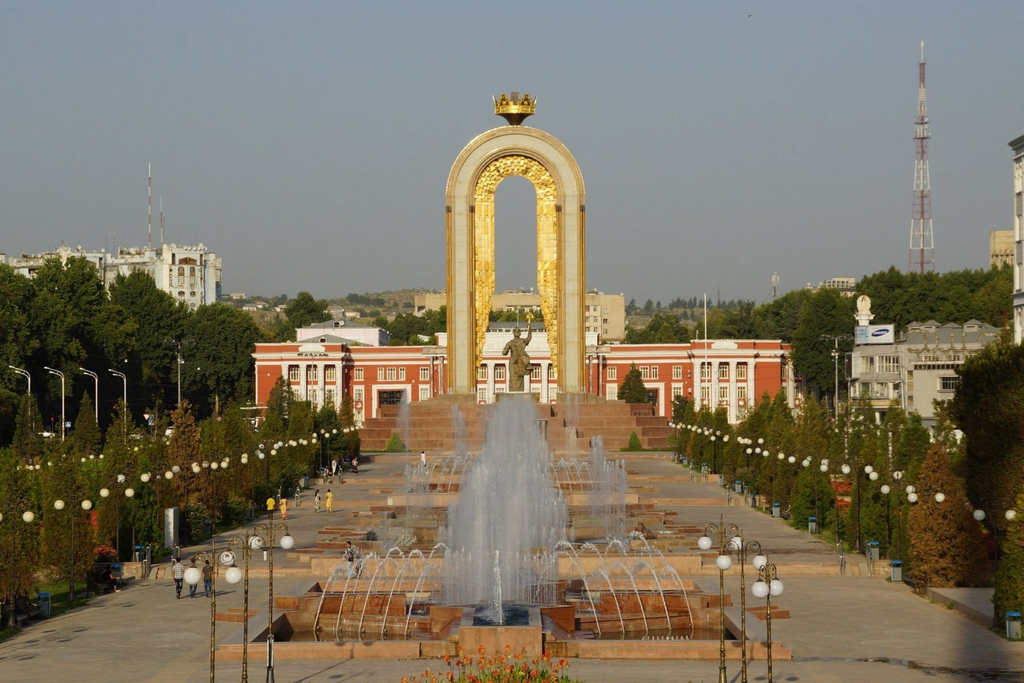Dusti Square

- Dusti Square, located in the heart of Dushanbe, is the city's central public plaza and a significant cultural, historical, and political landmark. The name "Dusti" translates to "Friendship" in Tajik, symbolizing unity and cooperation among the people of Tajikistan and their global ties. This expansive square serves as a hub for national celebrations, official ceremonies, public gatherings, and festive events, making it one of the most visited places in the city.
- At the center of Dusti Square stands the Statue of Ismail Somoni, a magnificent monument dedicated to the founder of the Samanid Dynasty. The grand bronze statue, standing beneath a golden arch, dominates the square and serves as a powerful symbol of Tajikistan’s historical legacy. The golden seven-pointed crown above the statue represents the national emblem of Tajikistan, while intricate engravings and decorative elements on the base highlight important moments in the nation’s history.
- Surrounding the square are several significant government buildings, including the Palace of Nations (Kokhi Millat), the residence of the President of Tajikistan. The Parliament Building and various ministries are also located nearby, reinforcing the square’s role as a political and administrative center. The area is designed with wide pedestrian walkways, beautifully landscaped gardens, colorful fountains, and seating areas, making it an inviting place for both locals and tourists.
- Dusti Square is a vibrant location at all times of the year. It plays a crucial role in national celebrations, including Independence Day (September 9th) and Navruz (Persian New Year), where large crowds gather to witness concerts, parades, and fireworks. The square is particularly breathtaking at night when the monuments and surrounding buildings are illuminated, giving the entire area a majestic glow. Whether visiting during the day for a leisurely stroll or at night for a stunning view of the city’s landmarks, Dusti Square is an essential stop for anyone exploring Dushanbe.
